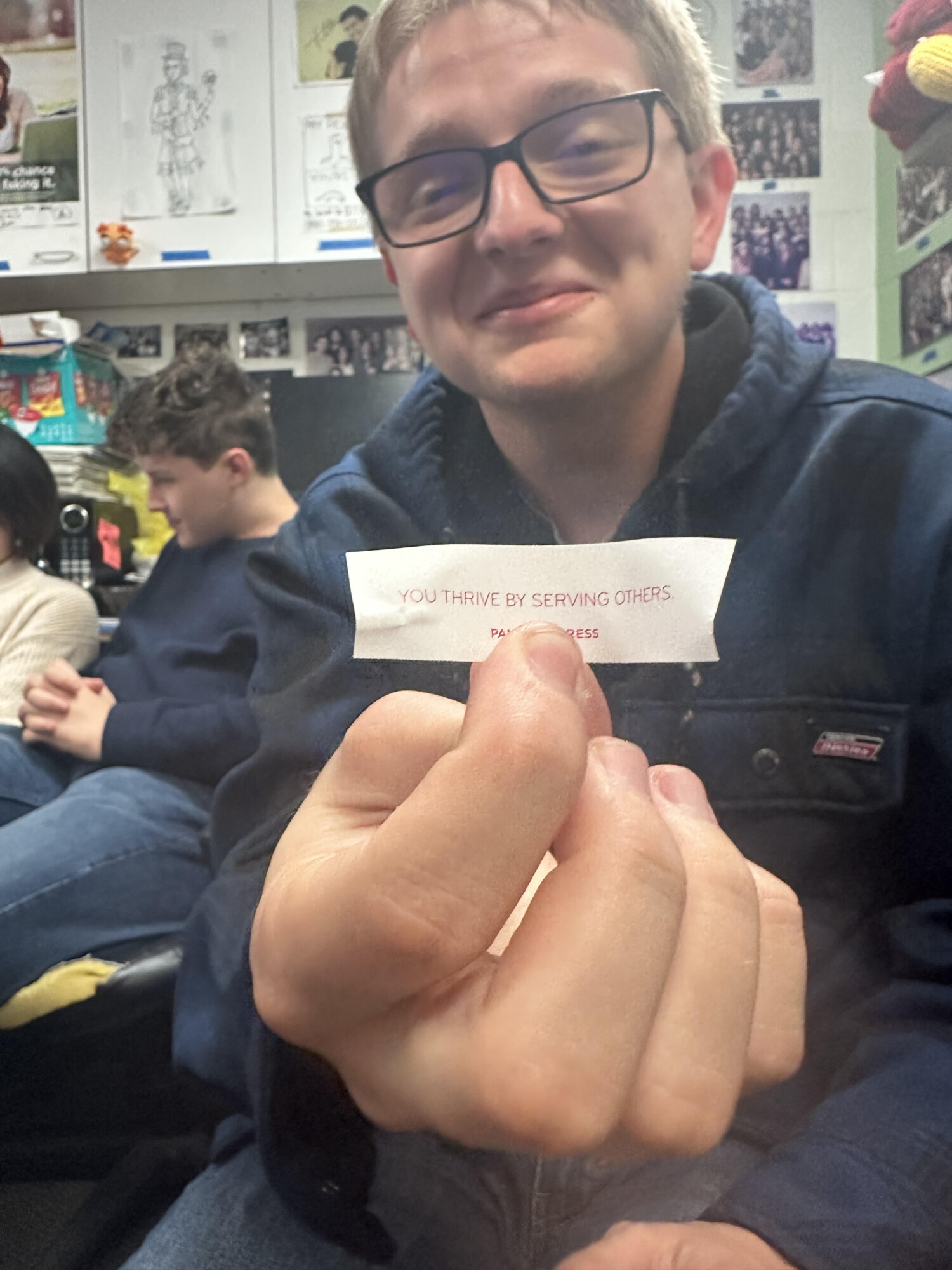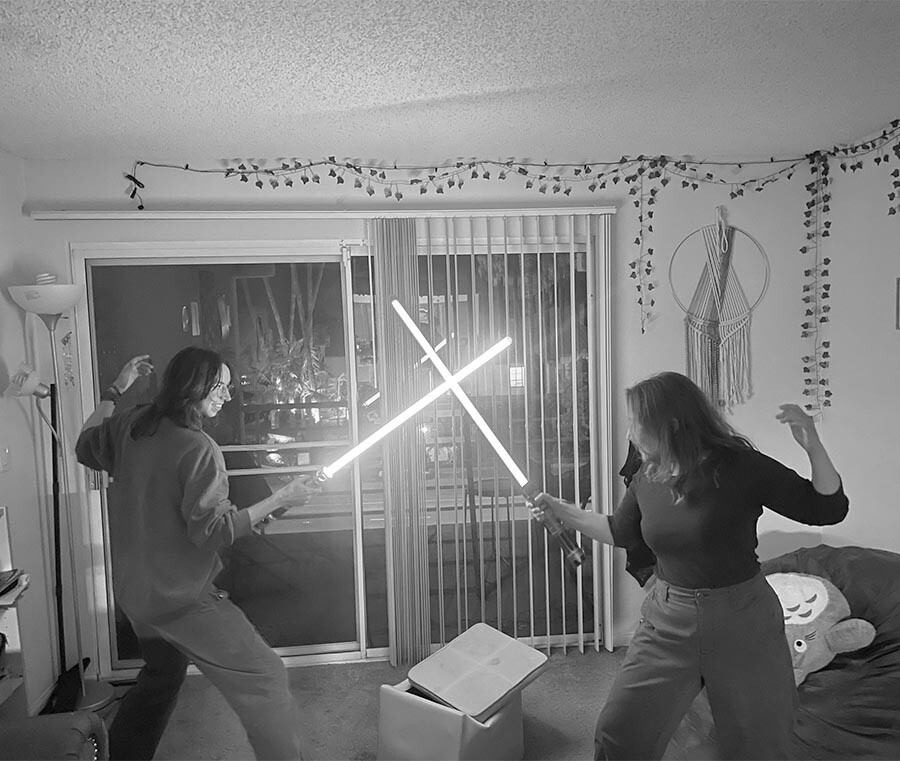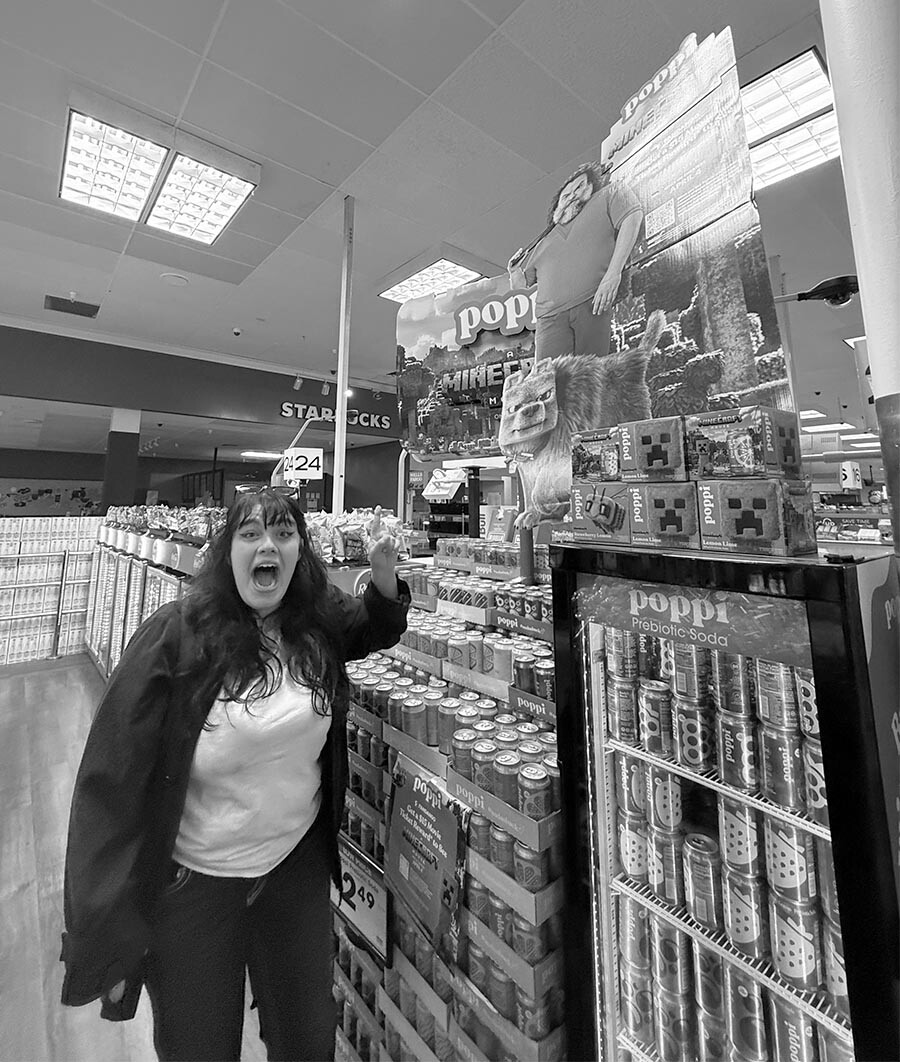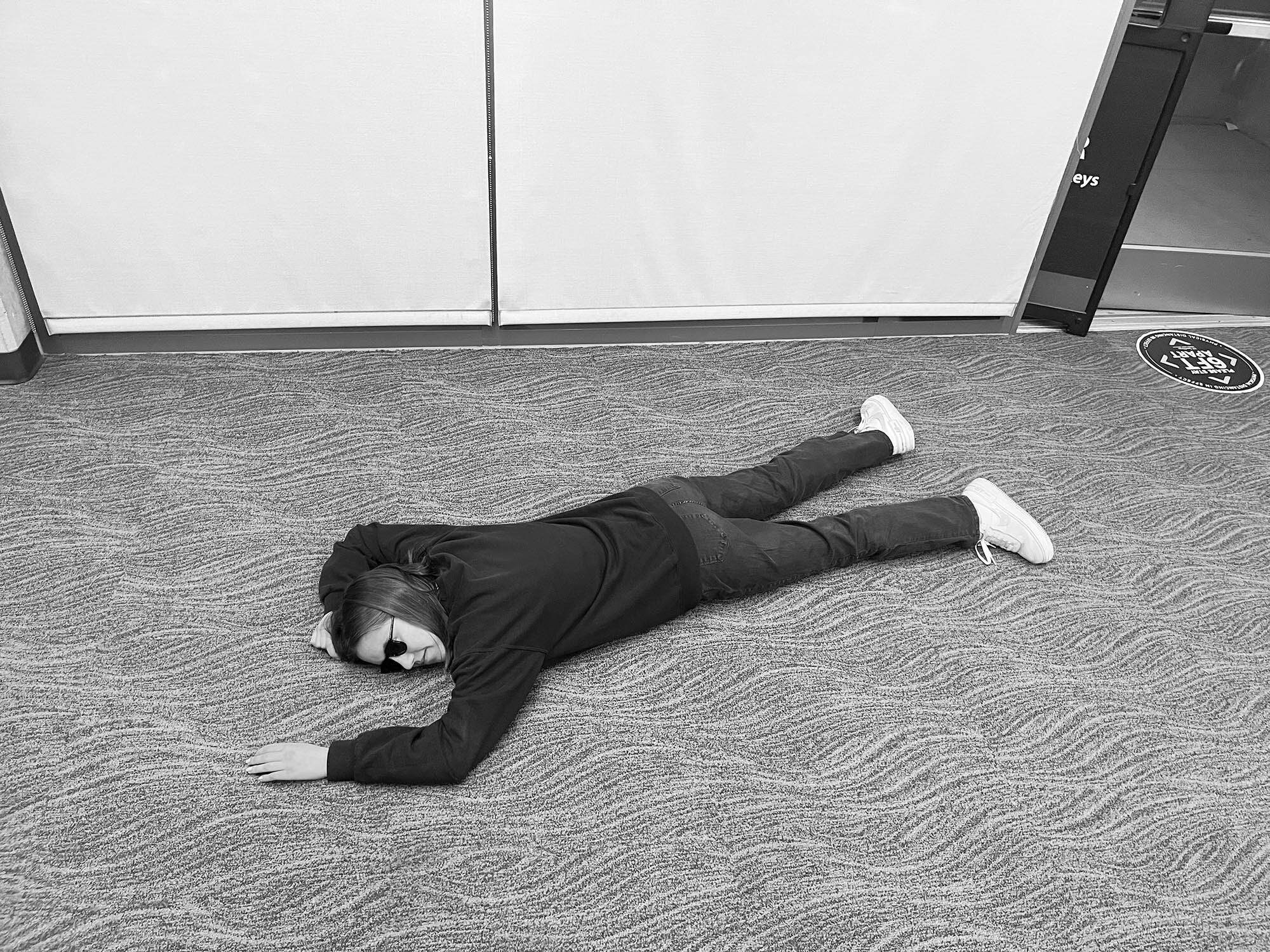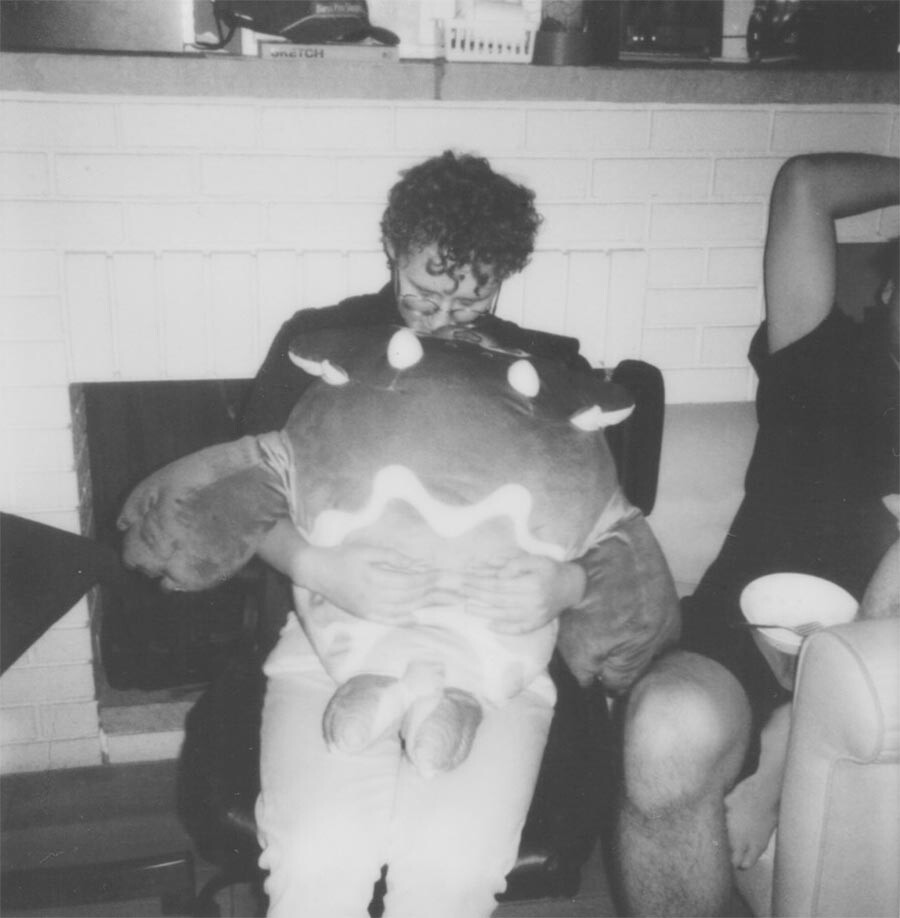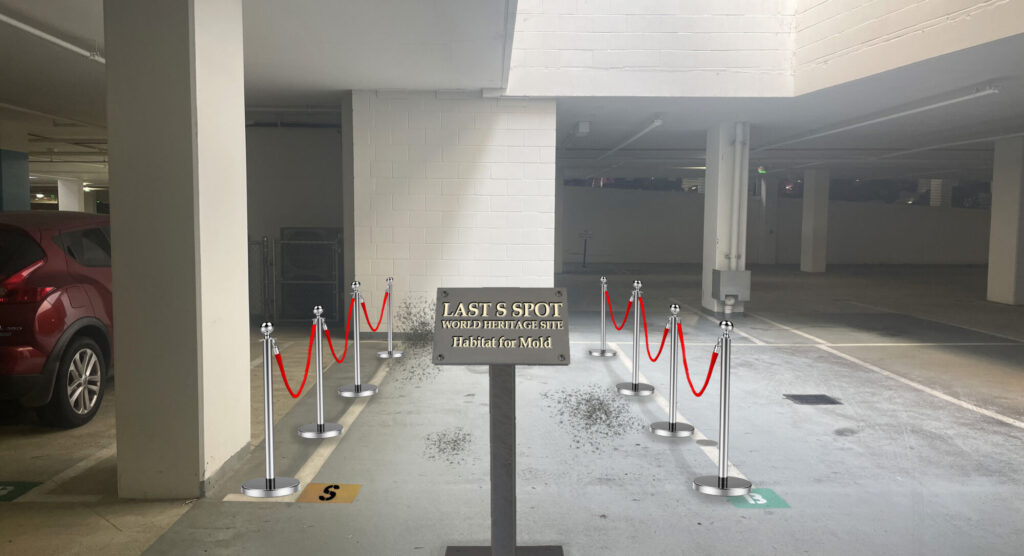
“What the hell did the S even stand for?!” said Chancellor Khosla.
Photo by Jordan Whitlow
Over the course of the last school year, the university’s Parking Operations team has made headlong progress on their mission to combat the “S spot infestation” that has taken the school by storm. “Yes, it’s tough work, painting in each ‘R’ as perfectly off-center as possible,” said Transportation Services representative Carrie Ong, “but it’s all worth it for our student residents, those beautiful speckles of sunshine. How can they ever achieve perfect attendance if they’re scrambling to park their car after their intense commute from Scholars to Voigt? It’s either replace S spots with SR spots or move everything back to Zoom.”
However, just as a student intern was about to paint over the last S spot in Scholars Parking Structure, they received a Slack announcement that the parking space had been declared a UNESCO World Heritage Site as per the tenth criterion. “It turns out that UCSD S spots are ‘the most important and significant natural habitat’ of this delightful dark gray mold, Penicillium commutorii.” The mold is notable for not curing cancer.
Students soon gathered around the red velvet rope that was placed along the perimeter of the S spot in a protest that grew by the hundreds. Their potent chants against the S spot’s closure could reportedly be heard from the Audrey Geisel University House, where administrators had gone into hiding. “I didn’t think a group of twenty-somethings were able to organize anything at all,” said one unseen administrator from under the kitchen sink. “If this keeps up, we’re gonna have to call the National Guard!”
However, one administrator had a “foolproof” solution. “Just give them swag,” said event coordinator Parvati Allnight. Allnight was able to disperse the mob by laying trails of bucket hats and tote bags leading away from the site. “Kids love free shit.”
Though Allnight was not present for the waves of protesters that regathered each day, on-site security was subsequently armed with T-shirt cannons loaded with spare merchandise from past events. But as this supply dwindled, university project planners observed that students kept returning for more. Investigations unearthed a surprising conclusion: “The ideal number of parking spots to have for maximum profit is one! Any more than that and we spread our resources too thin trying to ticket all these cars,” reflected Ong. It was concluded that if students were always going to “pay visitations” to the space, then they could afford to “pay visitations while they were at it.”
Within a week, pop-up S spot gift shops were built atop the surrounding parking spaces. To access the viewing window to the heritage site, students must navigate a maze of increasingly narrow internal walkways, symbolizing the risks one takes attempting “the God-hater’s parallel along La Jolla Farms Rd.” Students that manage to squeeze through the final gap emerge into a “generously wide, like double-park wide” foyer, where a rotating cashier peddles commemorative P. commutorii puffball keychains, model kits of the S spot, and booty shorts with “Student Parking” printed along the back.
When asked about the future of parking, Ong produced a booklet of blank tickets. “We’re raking in more money from the gift shops than we’d get from handing out 50 whole things of citations a day. Need I say more? Besides, we’re teaching important lessons about communing with nature here. Students should be grateful for the S spot they still have and all that its precious mold provides.”
“The what spot?” a passing student resident asked. “I didn’t see it. That little porthole window is getting fogged up from everyone practically licking the glass anyway. Can’t believe I ditched DOC for something that didn’t advertise boba.”





